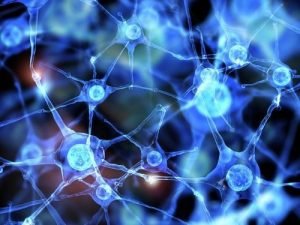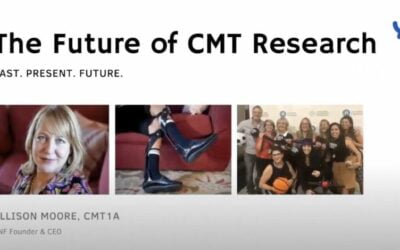 MANZOOR A. BHAT, M.S., PH.D., DEPARTMENT OF CELLULAR AND INTEGRATIVE PHYSIOLOGY UT HEALTH SAN ANTONIO, TX
MANZOOR A. BHAT, M.S., PH.D., DEPARTMENT OF CELLULAR AND INTEGRATIVE PHYSIOLOGY UT HEALTH SAN ANTONIO, TX
Myelination of nerves has the sole purpose of allowing axons to propagate nerve impulses over long distances in a saltatory manner. Peripheral or central neuropathies or diseases that affect nerve conduction are the leading cause of non-injury related neurological and neuromuscular disability and affect over 2.5 million people worldwide. In healthy individuals, the voltagegated ion channels become enriched at distinct regions along myelinated axons, allowing them to drive rapid propagation of nerve signals for cognitive functions as well as motor and muscle movements. Any perturbations in the structure of the myelinated nerves that reduce nerve conduction result in devastating disorders leading to loss of nerve and muscle functions. Currently, there are no therapeutic strategies available to restore myelinated axon structure and function. Moreover, there is also a lack of understanding of the critical therapeutic timeframe within which restoration of axonal functions must occur to recover nerve conduction, and ultimately regain lost mobility. With the decline in nerve function, the target muscles eventually begin to atrophy forcing the subjects to become wheelchair bound for the rest of their lives, thus impacting their quality of life and putting emotional and economic burden on the patients and their families.
Work from our group and others over the past two decades has identified key proteins that are central to the organization of the myelinated axons into functionally distinct domains defined by the presence of specific protein complexes that are essential for rapid nerve action potential propagation. One of these regions is named the “paranodal domain” which contains the axo-glial junctions (AGJs) that are established by Contactin-associated protein 1 (Cntnap1) and Contactin from the axonal side and Neurofascin 155 from the myelin side. Mouse models that have been genetically manipulated to become deficient in Cntnap1 or Contactin or Neurofascin 155 all become paralyzed with severely reduced nerve conduction leading to muscle atrophy, and die within 3-4 weeks after birth. These mouse mutants also show loss of the paranodal domain and disorganization of the myelinated axon structure and function.
Recently, mutations in human Cntnap1 gene were identified in a number of children that are associated with severe myelin defects further highlighting the importance of the Cntnap1 protein in nerve structure and function. Most of the children with Cntnap1 mutations display a broad spectrum of disabilities ranging from extreme muscle weakness to mild weakness, and all show developmental delays. Some children may develop typical phenotypes of the Charcot-MarieTooth disease with symptoms of the peripheral neuropathy. Given the broad range of mutations found across the Cntnap1 gene, it is clear that all these mutations alter Cntnap1 protein function leading to the disorganization of the paranodal domain and the myelinated axon structure.
Unfortunately, there are no treatments or therapeutic strategies available to help the afflicted children to regain nerve functions and to restore mobility to live an everyday normal life. Genomic DNA analyses of the families have revealed that in most cases one parent carries a mutation that leads to a complete loss of one of the Cntnap1 alleles, and another parent carries a mutation that causes a single amino acid change in the Cntnap1 protein. The children thus only have the Cntnap1 protein with the amino acid change that affects the Cntnap1 protein function in the nerve fibers. To begin to address how the children with Cntnap1 mutations could be helped to reduce their disease burden in the near future, we have generated mouse models with exactly the same mutations as some of the children have in their Cntnap1 gene. We have created the same mouse mutant combinations in which one allele of the mouse gene is absent and the other allele has the child’s mutation. These mice are currently being analyzed for defects in nerve conduction and nerve fiber structure to conclusively establish the impact of these single amino acid changes in Cntnap1 on its function and the physiological properties of the nerve fibers. Each mouse line is independently analyzed using a battery of phenotypic methodologies. We have also generated genetically modified mice that will allow us to produce normal Cntnap1 protein in the mutant mice that carry human mutations to establish whether this Cntnap1 protein can rescue the mutant animals at various times after birth and restore nerve function. To further establish a gene delivery method that could produce the normal Cntnap1 protein in the mutant animals, we have generated Lentiviral vectors that carry the full-length Cntnap1 gene. The recombinant viruses will be injected into the mutant mice to determine the efficacy of Cntnap1 gene delivery by viral vectors and the restoration of lost functions. Collectively, the mouse models of human Cntnap1 mutations offer the best hope to test restoration strategies as “proof of principle” towards human applications in the treatment or management of Cntnap1 mutations to restore nerve functions.
Acknowledgments:
The work on Cntnap1 mutations and developing therapeutic strategies has been sponsored by the families through the Hereditary Neuropathy Foundation. This support is vital for testing restoration strategies to these devastating human conditions.













0 Comments